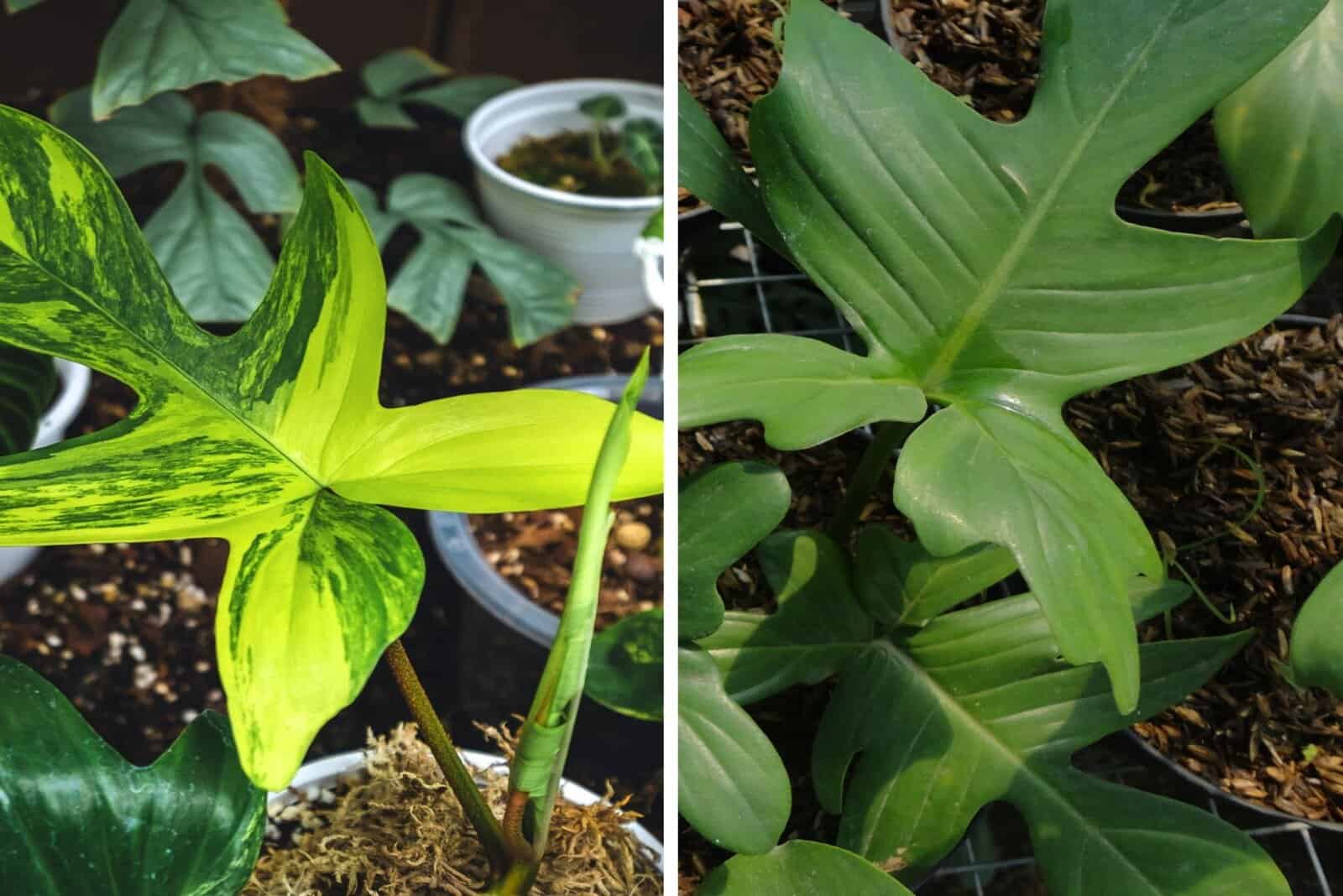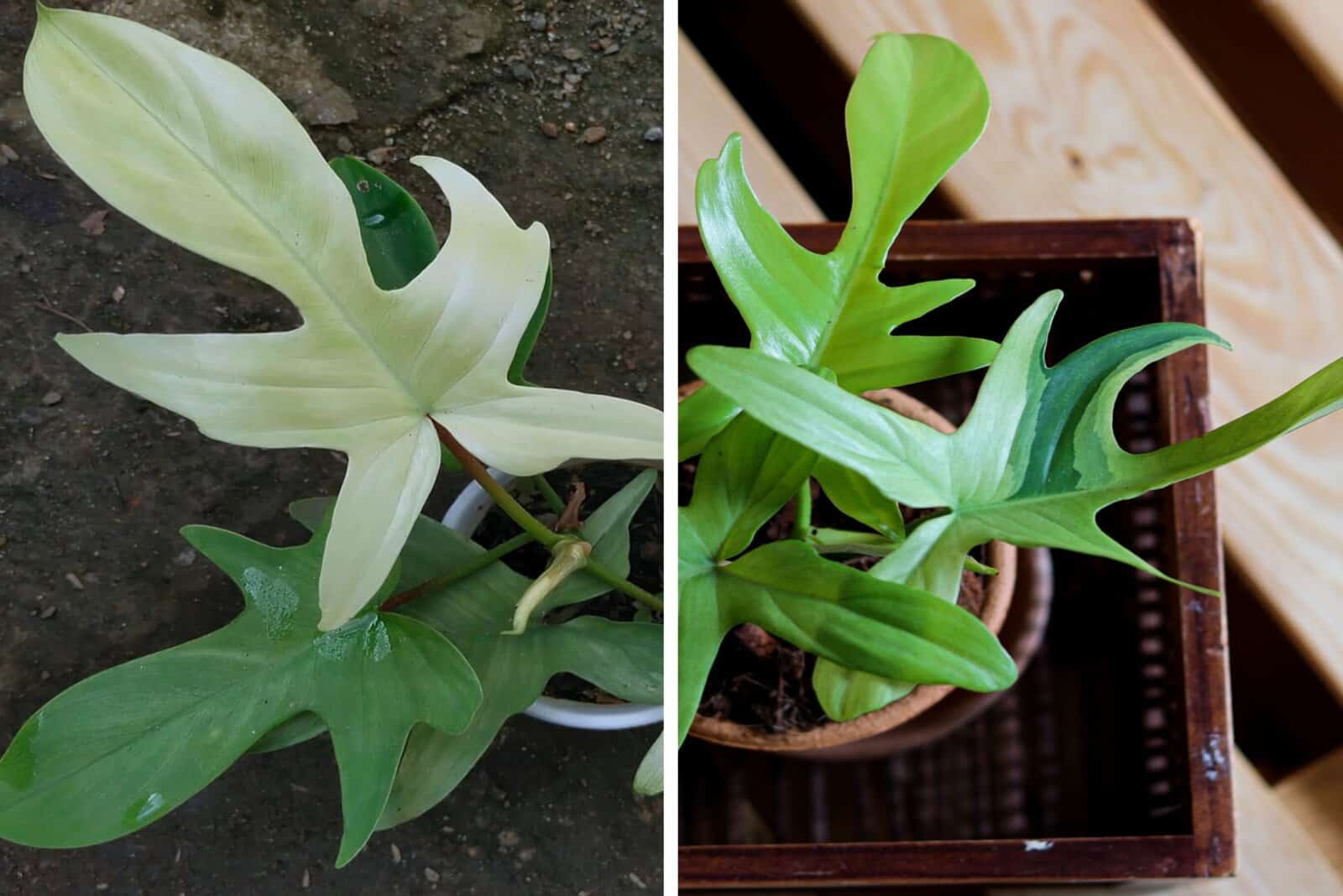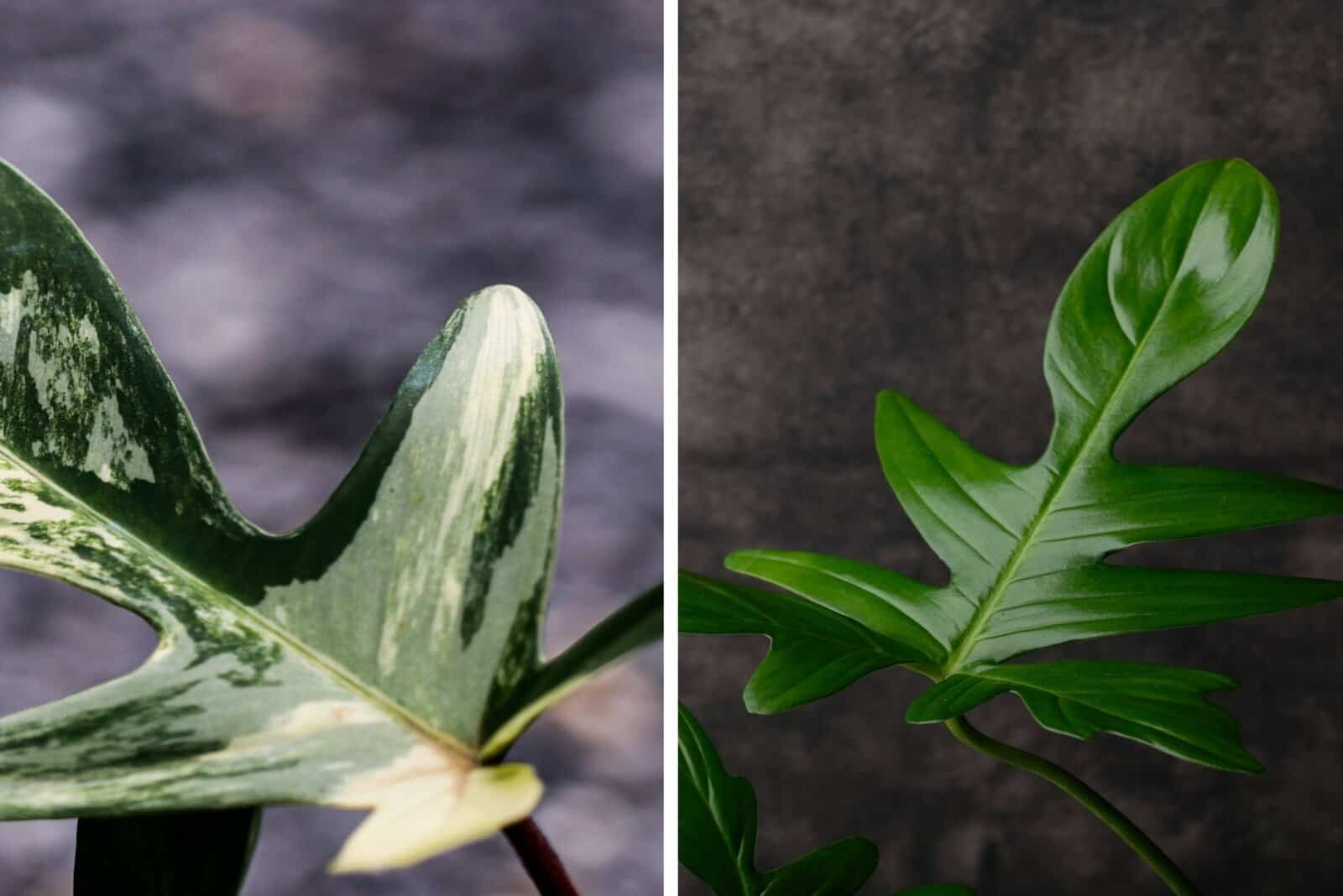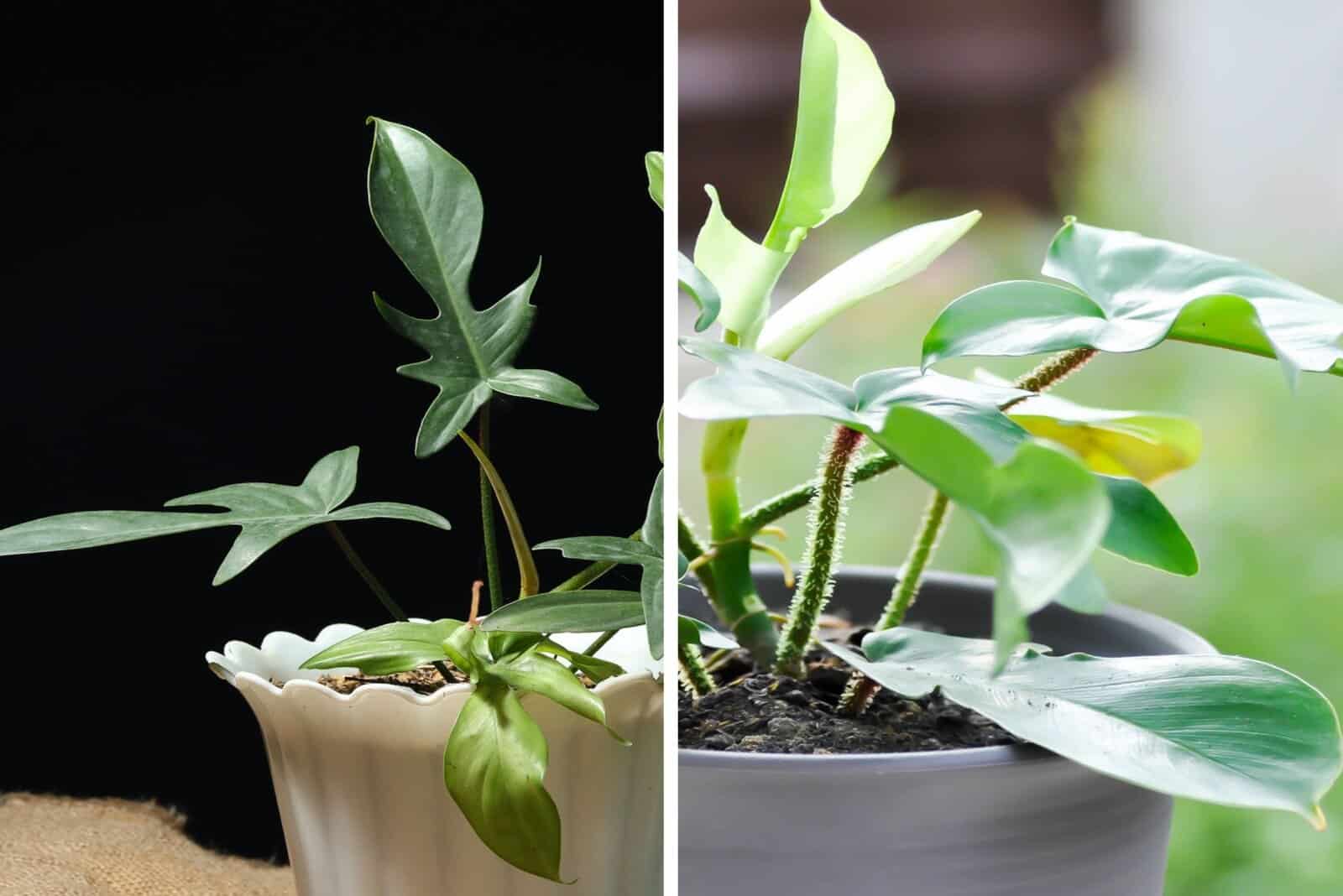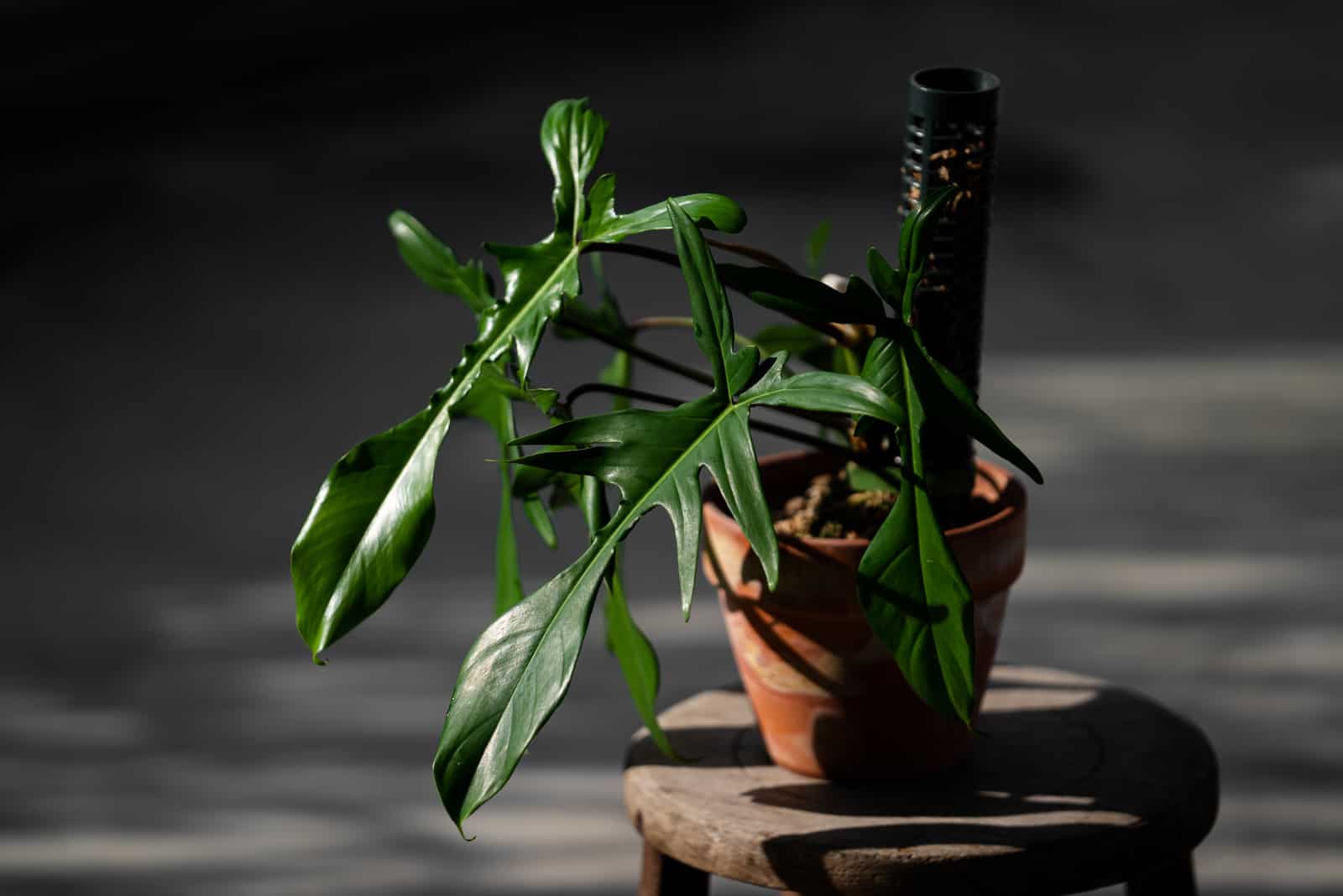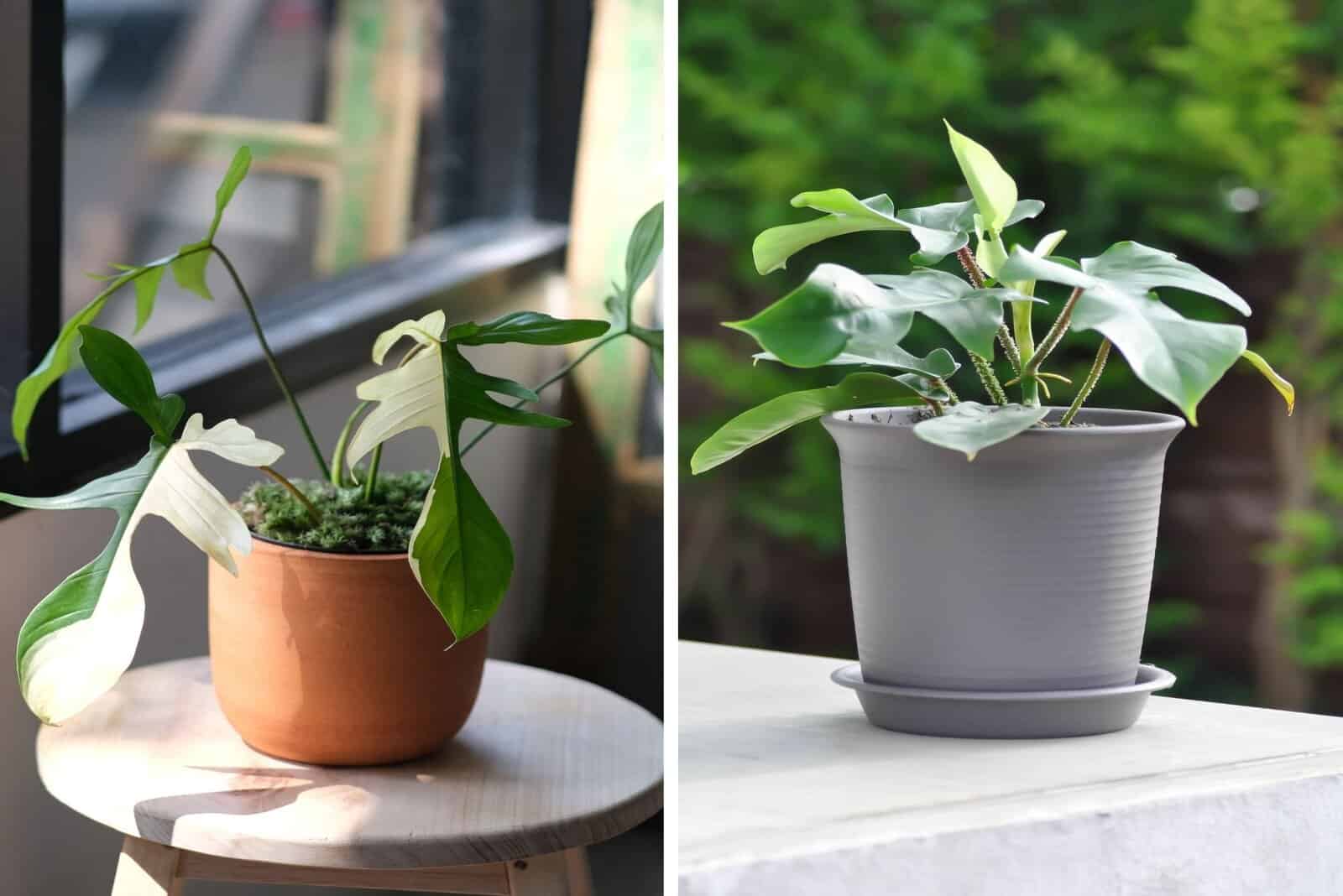If you are a plant enthusiast, I bet that you are already familiar with philodendrons – but, did you know that there are many hybrids out there?
That’s right!
Botanists today are crossing different plants to produce a plant with the best qualities.
Philodendron pedatum and Philodendron Florida are both members of the Araceae family, known for their dark green and variegated leaves.
Both of these beautiful houseplants look similar, so it can be difficult to distinguish them one from another.
Let’s get down to analyzing the differences between Philodendron pedatum vs Florida anaylsis to help you distinguish them apart!
Where Does The Difference Come From?
Well, we could say that P. pedatum is like a father to P. Florida.
Philodendron Florida, also referred to as Philodendron Florida ghost or Philodendron Florida Beauty Variegata, is a rare plant that was produced by crossing the Philodendron pedatum and Philodendron squamiferum.
Due to the resemblance between P. Florida and P. Pedatum, they often get mistaken for one another.
P. squamiferum has very distinctive petioles and a unique shape of leaves, which is why it shows no resemblance to P. Florida.
I am sure that you look a lot more like your mom or your dad – I guess when it comes to mixing genes, the principle is the same across the tree of life!
Philodendron Pedatum vs Florida: 3 Major Differences
Now that we have covered its origin, it’s time to learn the major differences between the Philodendron Pedatum and the Philodendron Florida.
Although these plants look almost identical, you can pay attention to the little details and differentiate them.
You can’t go wrong buying either of them!
However, if you have a preference for certain types, keep reading to find out about their differences.
Leaves
Philodendrons are usually grown as decorative indoor plants mainly because of their variegated leaves.
The majority of philodendrons have green leaves with variegation on them – the exact variegations are different among philodendron varieties and are used to distinguish between them.
Leaf color and shape can also vary among philodendron varieties.
Leaf color
Philodendron Pedatum produces larger leaves compared to Philodendron Florida.
Philodendron Pedatum has green petioles that are smooth, and the leaves are dark green with almost no variegation. The color of its leaves darkens over time.
Philodendron Florida produces small, white leaves that usually get darker and variegated as the plant matures.
The petioles are rougher when compared to P. pedatum, and they have a reddish color, which they inherited from Philodendron squamiferum.
Leaf shape
The main difference in leaf shape is that P. pedatum plants are prone to changes over their lifetime.
For instance, their leaves will have an oval shape when the plant is young. Then, the mature leaves are going to develop into characteristic lobes.
The length of the leaves can reach about 8 inches, although this depends on how well the plant is taken care of.
P. Florida produces smaller leaves that stay the same over its lifetime.
Multi-lobed leaves are characteristic of all philodendrons; they vary only in size and depth.
Flowers
Both of these tropical plants do not produce flowers.
However, they produce spathes that differ in color.
Philodendron pedatum produces brown to creamy spathes, while Philodendron Florida produces purple spathes.
Structure
P. pedatum and P. Florida are both climbers; so they will be needing a moss pole for support.
They will grow as tall as the pole can support them – however, P. pedatum grows taller than P. Florida.
Another difference is that P. pedatum tends to spread, especially if it is placed in a brightly lit area. The leaves spread wide and broad from the center of the plant.
P. Florida has clustered leaves and tends to stay more compact.
Philodendron Pedatum vs Philodendron Florida: The Key Similarities
Remember they are both Philodendrons, so they are going to have numerous similarities as well!
They are similar when it comes to plant care and common problems, such as toxicity, diseases, and pests.
Let’s look at the similarities more closely.
Plant care guide
When it comes to plant care, they usually have the same requirements.
If you are planning on buying either of them, this care guide will provide you with enough information to keep your new plant happy and healthy!
Light
The best way to take care of any plant is to mimic its natural habitat.
These tropical plants enjoy being in indirect light, or even in shaded areas.
Keep them both from direct sunlight as it can burn their leaves and damage the overall health of your plant.
The best location for these houseplants would be near a window that does not get direct sunlight.
Soil
Both Philodendron Pedatum and Florida prefer well-draining soil that is rich in nutrients.
You can use aroid potting soil mix, or you can make one on your own!
For your potting mix, you can add sphagnum, peat moss, orchid bark, and universal potting soil mix. Mix them all together and your Pedatum or Florida is going to love it!
You can also use this mix for other plants such as hoya, succulents, or other philodendrons like monstera.
Temperature & humidity
Being a tropical plant, your philodendrons love warmer temperatures and humidity.
Philodendrons often prefer temperatures in a range from 18 to 27 Celsius – anything above or below could damage the plant.
Philodendrons also prefer high humidity levels. Keep the level of humidity at about 60% to fulfill its needs and keep your plant happy and satisfied!
Although they can adapt to lower humidity levels, you can always invest in a good humidifier to maintain the required level.
Water
Philodendrons prefer balanced soil that is not too dry or too wet.
They don’t enjoy having soggy soil, as it can lead to root rot, so do not overwater your new plant!
The best way to approach the plant when it comes to watering is to check if the soil has dried before you water it again.
You can do this simply by using your thumbs, or if you don’t want to get your hands dirty (literally), you can always use wooden chopsticks.
Fertilizers
You can look at fertilizers as meals for plants. Be honest, who doesn’t enjoy eating a good and delicious meal?
The same goes for plants.
Your Philodendrons love fertilizer that is rich in nitrogen. You should use only half of the recommended amount every other week if your plant is growing, or once a month if the growing season is over.
Growers often dilute their fertilizers with water to prevent chemical build up and damage.
Soon, you will be able to see new leaves and growth. This is your plant’s way of saying “thank you.”
Propagation & repotting
You can propagate both of these plants by cutting the stems and putting them in water or soil – it’s totally up to you.
The cut should contain nodes and leaves that will sprout roots, leaves, and eventually, a completely new philodendron!
You should repot your philodendron if you see the roots coming out of the pot or if you see any signs of root rot.
Though these procedures are the same for both plants, you can watch this video for Philodendron Pedatum:
and for Philodendron Florida, you can check this one:
Toxicity
Now we have come to another similarity: toxicity.
Since Philodendron Pedatum contains toxic substances, it is logical that its child will inherit the same substances and be toxic as well.
Calcium oxalate crystals are the substances in question, and they can cause nausea, vomiting, and throat swelling if ingested.
So, keep the little ones away from your Philodendron Pedatum, or Philodendron Florida, or both!
Pests & diseases
Unfortunately, both philodendrons are prone to pests such as mealybugs, scales, and spider mites.
Do not worry! Your philodendrons are strong and can be easily treated with insecticides or neem oil if any of those little bugs manage to invade your plant.
When it comes to disease, fire blight is the most common one. Cool name for a disease, right?
Well, it is not so cool for your philodendron as it can lead to their leaves and branches dying.
If you see any spots on its leaves, immediately remove those leaves and observe if they appear again.
Final thoughts
After our analysis of Philodendron Pedatum vs Florida,’ which plant would you choose?
You won’t go wrong with either plant. P. Pedatum grows larger, dark green leaves while P. Florida grows smaller, paler leaves, which is why it is often referred to as a Florida ghost – a great chance to prank someone and say you have a ghost in your room!
Also, what’s the harm of getting both of them?
You would have delicate plants with the same care guide, which will save you time and money and make your room look more lively, as well!
You can buy them in almost any plant shop, since philodendrons are quite popular among plant collectors.
I hope you enjoyed reading the article; until next time!
Like this post? Share or pin it for later!

